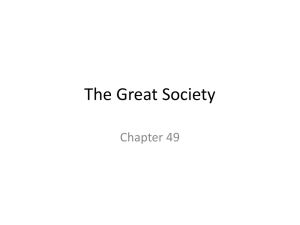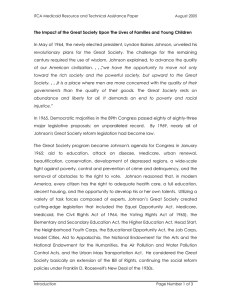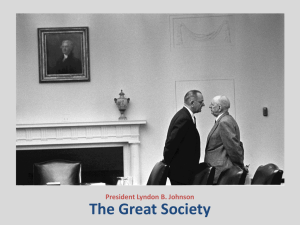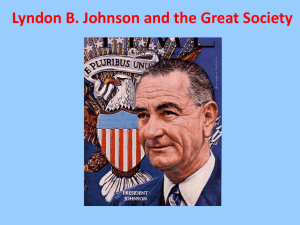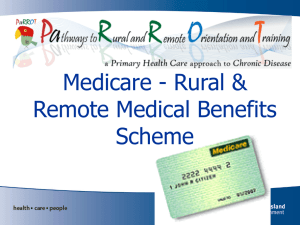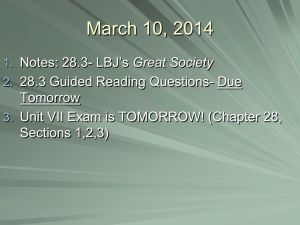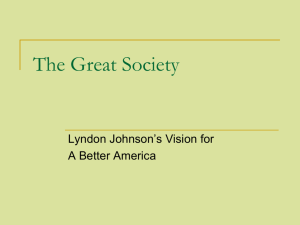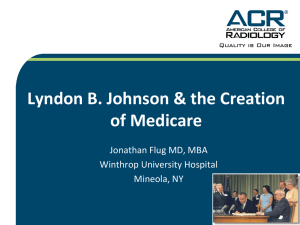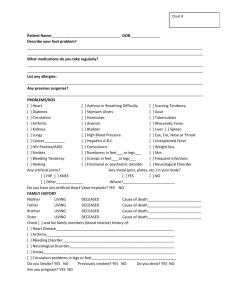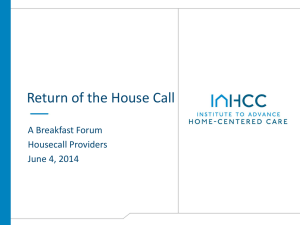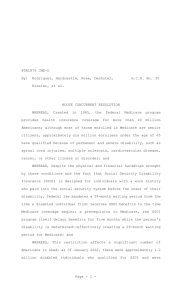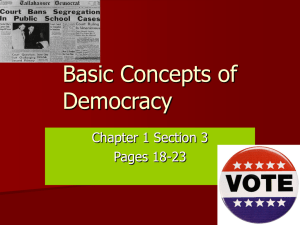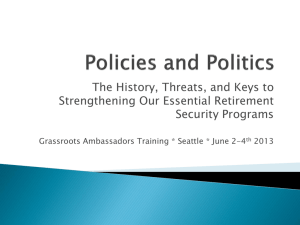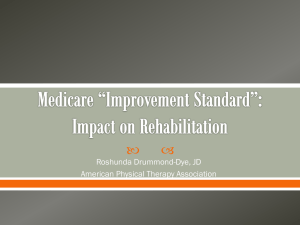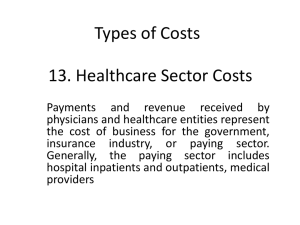The Great Society
advertisement
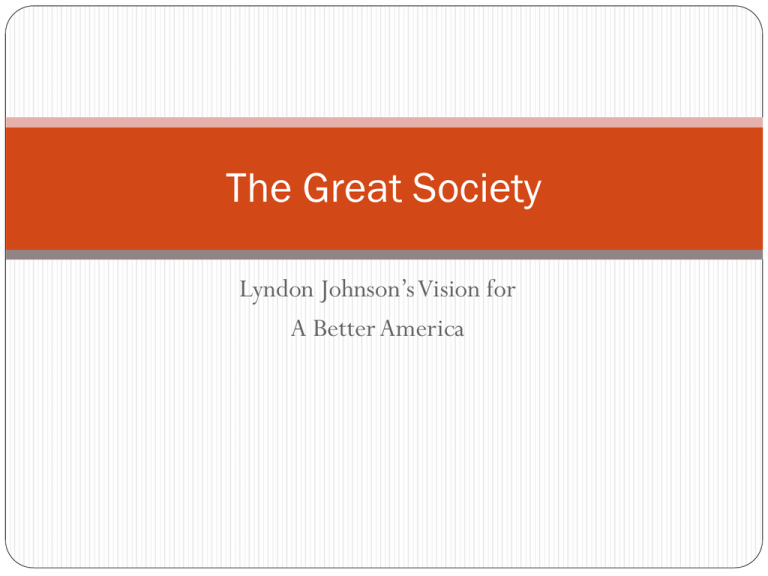
The Great Society Lyndon Johnson’s Vision for A Better America Johnson’s Idea of a “Great Society” • 1964 wins election • Plans a program of economic and social reforms “Great Society." White Board: What party was LBJ and how did he become President? Elements of the Great Society •unfinished goals of New Deal – universal health care & civil rights •American culture through Federal aid to the arts, sciences, and humanities. •Show the world “American Way” was superior to the ideas of “world socialismUSSR” •COLD WAR Civil Rights was key part of the Great Society 64 Civil Rights Act 65 Voting Rights Act Both pushed by the grassroots of the civil rights movement Expanding Voting Rights 1965, Johnson signed the Voting Rights Act, • He pushed it through Congress. • The act outlawed literacy tests as a way of limiting the right to vote. It also provided Federal resources to investigate actions to prevent people from voting Discuss How does Civil Rights fit in the Great Society Agenda? War on Poverty 1964 State of the Union Johnson "today, here and now, declares unconditional war on poverty in America, and I urge this Congress and all Americans to join with me in that effort.“ Program Focused "chronically distressed areas" of the country, a youth employment ("job corps") plan, expansion of the food stamp and unemployment relief systems special aid to schools, libraries, hospitals, and nursing homes. Problems with the War on Poverty War on poverty was greatly underfunded Poverty continued and today gap between rich and poor is greater than before 1960’s America was spending on another major event White Board question “What was draining American money and taking away from the war on poverty?” 1965: Title XVIII and XIX of the Social Security Act Medicare (Title XVIII) established to provide health insurance coverage to persons over age 65 Medicaid (Title XIX) established to provide health insurance coverage to low income women and children (also, aged, blind and disabled) MEDICARE Medicare is a government service that helps provide health care for senior citizens and disabled U.S. citizens. Medicare part A: helps with hospital costs Medicare part B: requires a monthly fee and helps pay for medical costs Medicare part D: pays for prescription drugs White Board What is one benefit and one problems in this system 1966: Highway Safety Act and the National Traffic and Motor Vehicle Safety Act Authorized the federal government to set and regulate standards for motor vehicles and highways Vehicles were built with new safety features, including head rests, energy-absorbing steering wheels, shatterresistant windshields, and safety belts By 1970, motor-vehiclerelated death rates were decreasing 1968: School Lunch and Child Nutrition Act Expanded In 1968, Congress expanded the School Lunch and Child Nutrition Act. A program was created to provide food for school-age children during the summer. Additionally, a year-round program was initiated to provide food to low-income children, as well as children in day-care centers and Head Start programs. Head Start-free low income pre-school Discuss Can all these programs make a “Great Society” ? Would you call the “Great Society a success or failure Money for Culture Johnson also supported bills to establish the National Endowment for Humanities and the National Endowment for the Arts. Both the NEA and the NEH, created in 1965, Discuss Which party supports increased funding for these programs and who is in favor of reducing funding? Why do you think that is? Impact of the Great Society •Most of the Great Society programs remain intact in some way. • Funding for each program, however, has varied according to holds power in the Federal government and in each of the state governments. •the programs have always been part of the ongoing debates over “American values.” •Programs have run costly and pushed our debt. •Social Security and Medicare take largest part of the us Budget.
